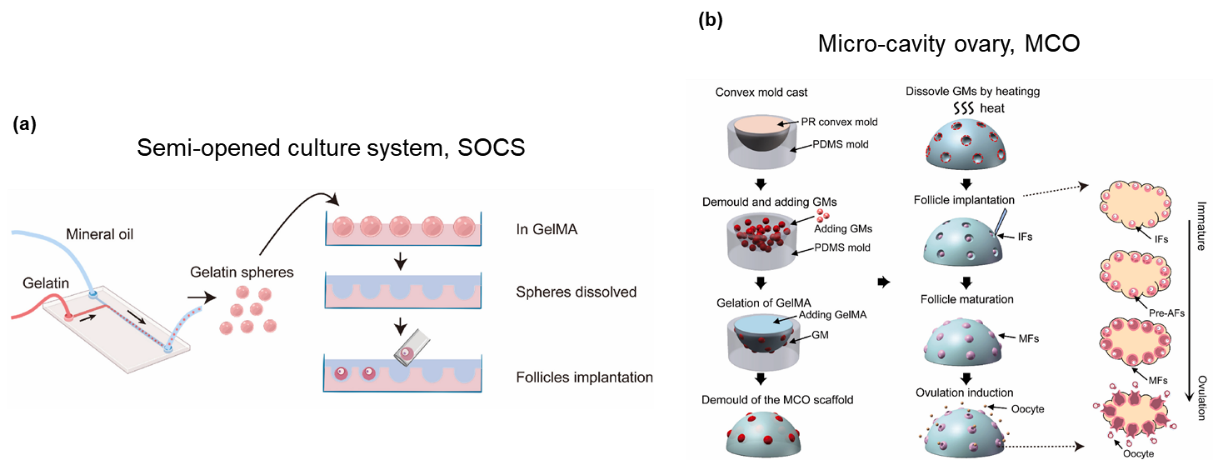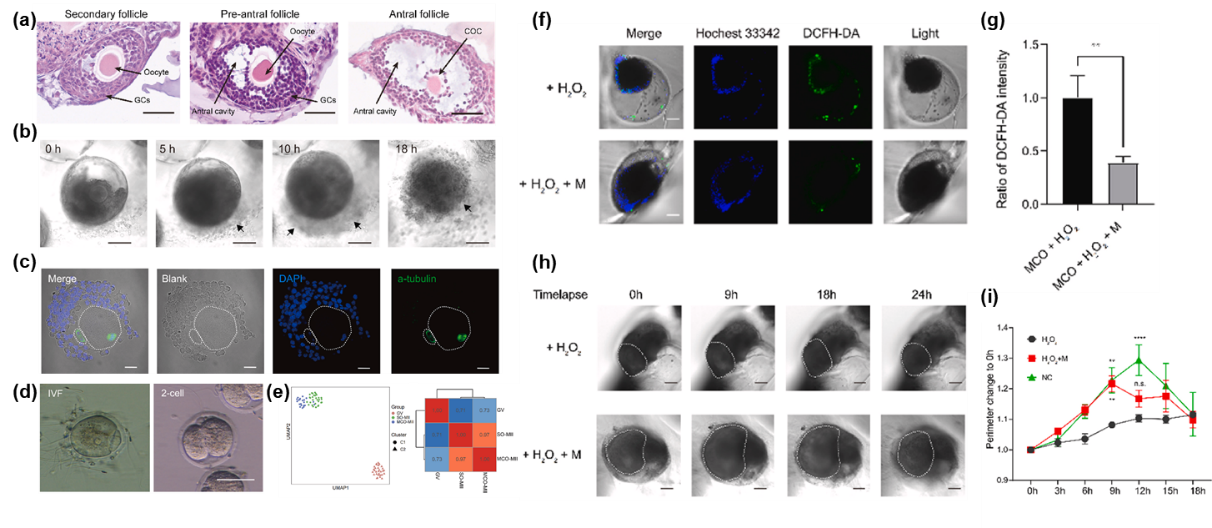The ovary is a vital organ for women to maintain hormone balance and generate reproductive cells. Nearly 15% of couples of childbearing age face infertility, but there is a lack of ovarian in vitro models for drug toxicity research. During each ovulation cycle, follicle size and hormone levels represent periodic changes, posing a challenge for mimicking the dynamic of the ovary in vitro. Therefore, there is an urgent need to develop a biomimetic ovarian in vitro model that supports follicle development and replicates the ovulation cycle, which may be critical for evaluating and discovering new drugs.
Recently, a research paper titled "Creating a semi-opened micro-cavity ovary through sacrificial microspheres as an in vitro model for discovering the potential effect of ovarian toxic agents" was published in the academic journal Bioactive Materials by the team of Ting Zhang and Zhuo Xiong from the Department of Mechanical Engineering at Tsinghua University. The study provided a semi-opened culture system (SOCS) and developed a micro-cavity ovary (MCO) model with ovarian function based on the SOCS.

Figure 1. The strategy of fabricating the SOCS and MCO model.
The research has found that the MCO model supports the development of immature follicles into mature follicles and recapitulates the ability of spontaneous ovulation. In detailed analysis, it was discovered that the oocyte in the MCO model that underwent spontaneous ovulation was in the MII phase and had fertilization ability. Therefore, the MCO model has high similarity with the physiological ovary in both structure and function. Further research has found that the MCO model can quickly respond to the change of drug components in the culture medium. The author found that the use of peroxide can inhibit the cumulus cells expansion in the MCO model, which may lead to reproductive dysfunction. Therefore, the MCO model provides comprehensive information for drug research and realistically simulates the dynamic response of the ovary to drug stimulation in vitro .

Figure 2. The MCO model recapitulated physiological ovarian function and was used for discovering the potential effect of ovarian toxic agents. (a-b) In vitro recapitulation of follicular development and ovulation. (c-e) Biological characterization of the spontaneously ovulated oocyte in the MCO model. (f-i) The MCO model is used to investigate the potential effect of ovarian toxic agents.
Associate Professor Ting Zhang and Zhuo Xiong are the corresponding authors, Dr. Min Ye is the first author from Department of Mechanical Engineering at Tsinghua University. Associate Professor Jin Gu from the Department of Automation at Tsinghua University also participated in this research. Other authors include Yi-Ran Shan from the Department of Automation at Tsinghua University, Bingchuan Lu, Hao Luo, Binhan Li, Dr. Yanmei Zhang, Zixuan Wang, Yuzhi Guo, and Assistant Professor Liliang Ouyang from the Department of Mechanical Engineering at Tsinghua University. This research was supported by the National Key Research and Development Program of China.
Link to the paper:
https://doi.org/10.1016/j.bioactmat.2023.02.029.







